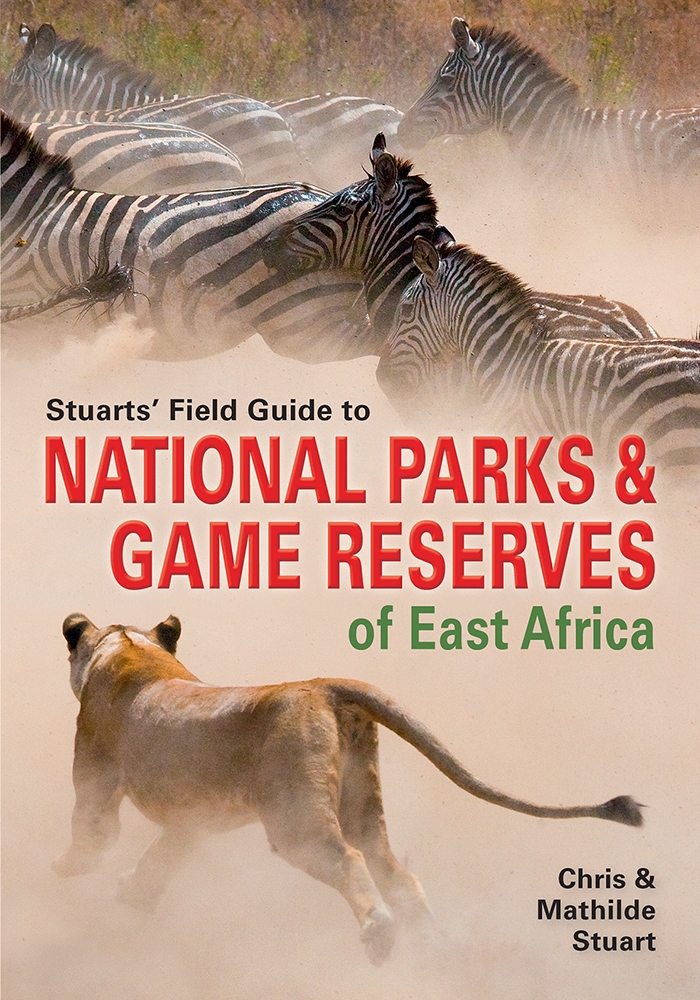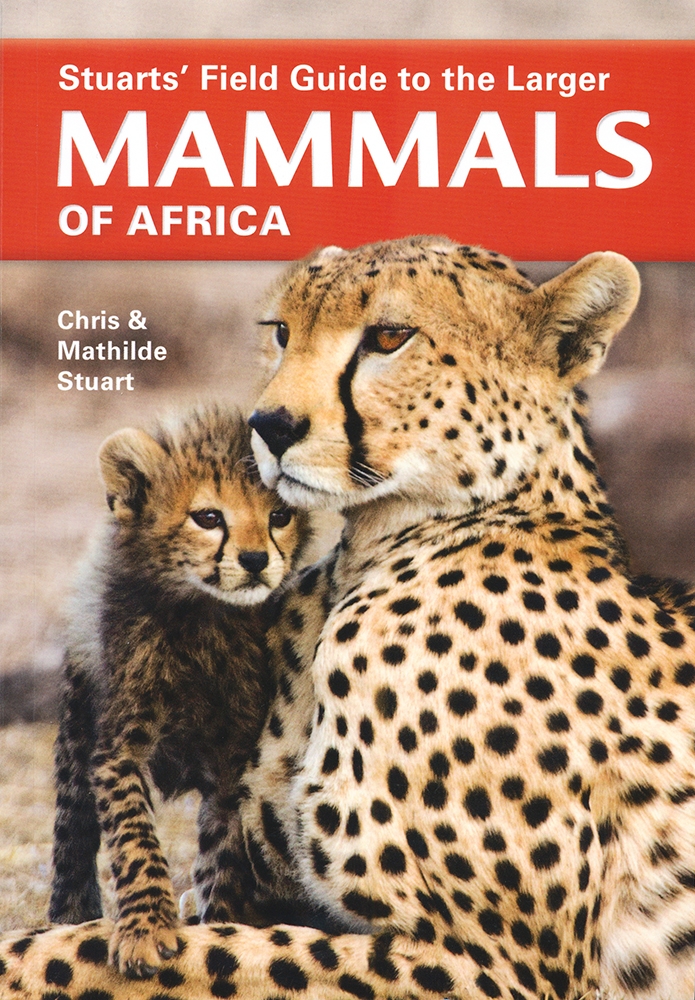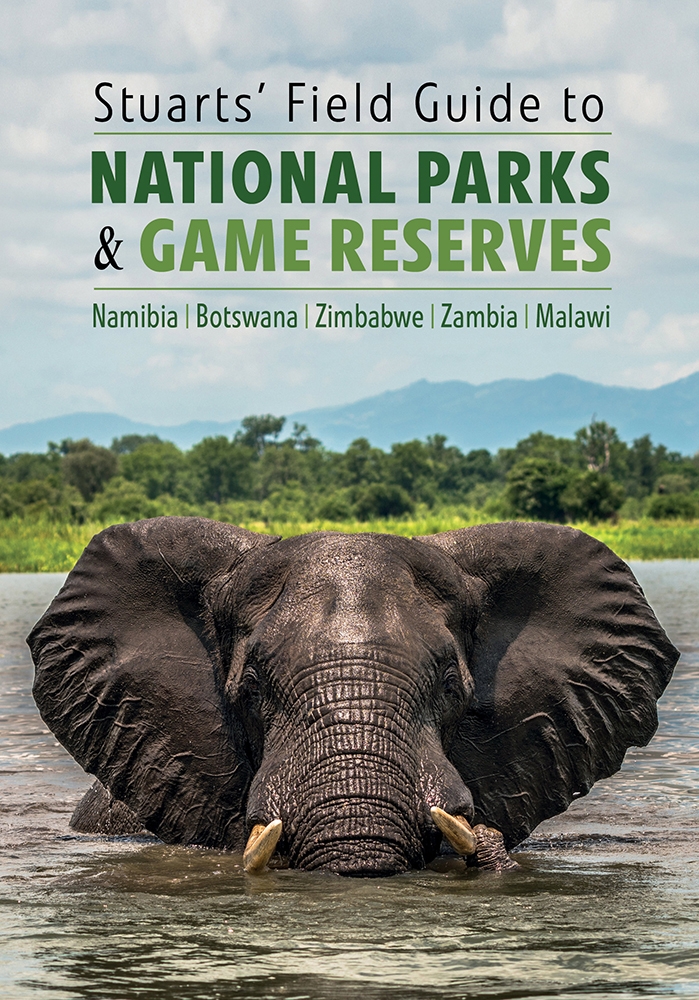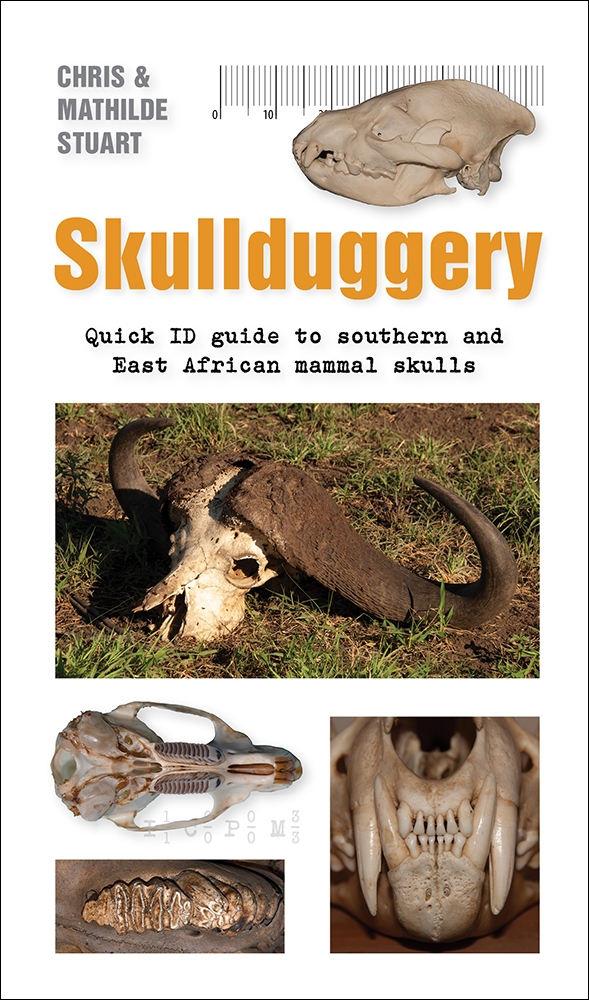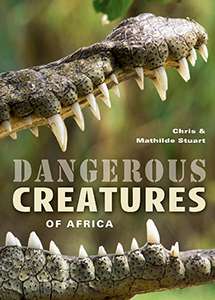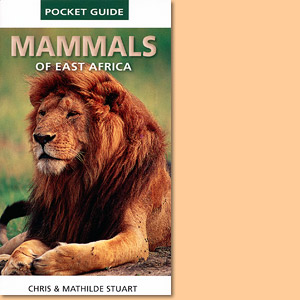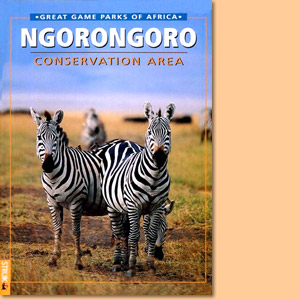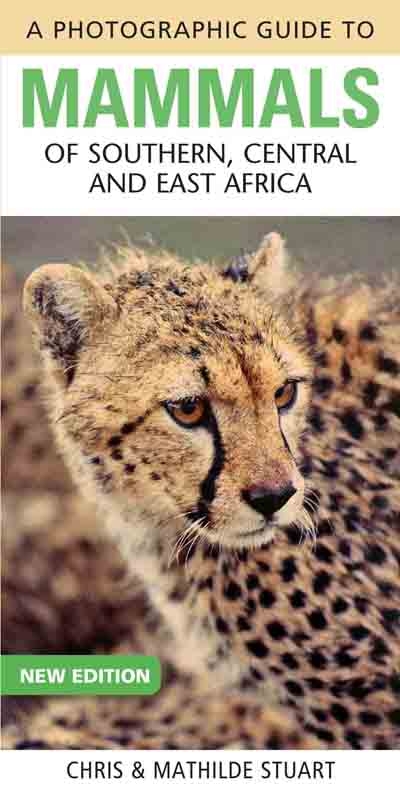A Field Guide to the Tracks & Signs of Southern, Central and East African Wildlife, by Chris and Tilde Stuart

A Field Guide to the Tracks & Signs of Southern, Central and East African Wildlife, by Chris and Tilde Stuart. Randomhouse Struik; Imprint: Nature
The new edition of A Field Guide to the Tracks & Signs of Southern, Central and East African Wildlife, by Chris and Tilde Stuart, retains the unique approach to identification that made the first edition so popular.
All animals, even humans, leave signs of their presence in an environment. By closely studying such clues you can glean much information about the mammals, birds, reptiles and invertebrates in the area without ever seeing them. Many animals are active mainly during the hours of darkness, or are highly secretive and spend much of their time under cover, so in the past people had to be skilled at detecting and tracking prey, or else go hungry. Reading and interpreting animal tracks and signs must have been second nature to early humans, yet today only a few hunter-gatherers, such as the San (Bushmen) of the southern deserts and the Pygmies of the equatorial forests, retain this ability. Often farmers, hunters, professional conservationists and others who spend a great deal of their time in rural environments know surprisingly little about the activities of the creatures around them. In fact, most people are unable to tell one track from another or to recognise even obvious signs.This is a pity, since tracking and reading signs is an absorbing and rewarding pastime. Although a particular track or sign may be unfamiliar to you, with some thought and detective work you can often identify the animal that made it and establish what that animal was doing. It is even possible on occasion to identify a particular individual, such as a leopard with a missing toe, the result of a lucky escape from a gin trap, say, or an antelope with a damaged hoof.The picture you are able to build up can be as accurate as if you had observed the animal directly, and may sometimes even provide you with additional information. By interpreting animal tracks and signs in an area, you can piece together a record of recent visitors and events. For instance, if you came across the site where a leopard had stalked an impala you might see the following: approach tracks, the spot where the predator crouched, jumping prints, deep tracks left by the antelope in its bid to escape, blood spots on the sand, a drag mark leading to the bushes among which the predator concealed its kill, and scratch marks that the cat gouged into a nearby tree after its meal. It would be easy to walk straight past the scene, but a careful observer could piece together a picture that is as fascinating as witnessing the kill itself. A word of warning: be extremely careful if you are on foot in an area where potentially dangerous animals such as lions, leopards, elephants, rhinos, hippos, buffaloes or Nile crocodiles occur. It is easiest to read signs in moderately soft (not loose) ground, but even if the substrate is very hard and you cannot find tracks, there is usually other evidence t0 show that a creature has passed through the area.The stories that can be read are sometimes amusing or dramatic, and they generally add greatly to your understanding of the animals in a particular area. (...)
This is an excerpt from the guide: A Field Guide to the Tracks & Signs of Southern, Central and East African Wildlife, by Chris and Tilde Stuart.
Title: Field Guide to Tracks and Signs of Southern and East African Wildlife
Authors: Chris Stuart; Tilde Stuart
Publisher: Randomhouse Struik
Imprint: Nature
4th edition. Cape Town, South Africa 2013
ISBN 9781770073609 / ISBN 978-1-77007-360-9
Softcover, 14x21 cm, 488 pages, 2000 photos and illustrations
Stuart, Chris und Stuart, Tilde im Namibiana-Buchangebot
A Field Guide to the Tracks & Signs of Southern, Central and East African Wildlife
Latest edition of A Field Guide to the Tracks & Signs of Southern, Central and East African Wildlife.
Traveller's Wildlife Guide Southern Africa
Traveller's Wildlife Guide Southern Africa introduces 500 of Southern Africa’s most common amphibians, reptiles, birds, and mammals.
Stuart's Field Guide to National Parks and Game Reserves of East Africa
Stuart's Field Guide to National Parks and Game Reserves of East Africa provides an overview of some 58 protected areas across East Africa.
Stuarts’ Field Guide to the Larger Mammals of Africa
Stuarts’ Field Guide to the Larger Mammals of Africa concentrates on the more visible and easily distinguished larger species.
Stuarts' Field Guide to the Tracks & Signs of Southern, Central and East African Wildlife
Stuarts' Field Guide to the Tracks & Signs of Southern, Central and East African Wildlife, this is the 5th revised edition.
Stuarts' Field Guide to National Parks and Nature Reserves of Namibia, Botswana, Zimbabwe and Zambia
Stuarts' Field Guide to National Parks and Nature Reserves of Namibia, Botswana, Zimbabwe and Zambia.
Carnivores: Quick ID guide to Africa's predatory mammals
Carnivores: Quick ID guide is a compact and quick ID identification guide to Africa's predatory mammals.
Flying Mammals Quick ID guide to the bats of Africa
Flying Mammals Quick ID is a compact and quick ID identification guide to the bats of Africa.
Avian Architects: Quick ID guide to nests and eggs of southern African birds
Avian Architects: Quick ID is a compact and quick ID identification guide to nests and eggs of southern African birds.
Primates: Quick ID guide to Africa's great apes, true monkeys and their relatives
Primates Quick ID is a compact and quick ID identification guide to Africa's great apes, true monkeys and their relatives.
Skullduggery: Quick ID guide to southern and East African mammal skulls
Skullduggery is a compact and quick ID identification guide to skulls of southern and East African mammals.
My first book of Southern African animal tracks
My first book of Southern African Animal Tracks introduces 55 different types of animals and their footprints.
Stuarts' Field Guide to Mammals of Southern Africa
Stuart's Field Guide to Mammals of Southern Africa covers near to 400 mammal species including Angola, Zambia and Malawi since the 5th edition of 2015.
Behaviour briefs: Quick guide to southern and East African animal behaviour
Why do they do that and what next? Behaviour briefs is a quick guide to southern and East African animal behaviour.
On Track: Quick ID Guide to Southern and East African Animal Tracks
On Track is a quick identification guide to tracks of Southern and East African most commonly found mammals, reptiles, rodents, birds and insects.
Stuarts' Field Guide to National Parks and Nature Reserves of South Africa
Stuarts' Field Guide to National Parks and Nature Reserves of South Africa offers a comprehensive overview of 43 parks, reserves and wilderness areas.
Dangerous creatures of Africa
The focus of Dangerous creatures of Africa is on understanding, identifying, avoiding and surviving these potential hazards of the African wilds.
Taschenführer: Säugetiere, Südliches Afrika
Der Taschenführer Säugetiere: Südliches Afrika, legt seinen Schwerpunkt auf die größeren, öfter gesehenen Tierarten, schließt allerdings auch einige ungewöhnliche Arten ein.
Mammals Of East Africa Pocket Guide
Mammals Of East Africa Pocket Guide covers all of the common and some of the less common mammal species.
Mammals of Southern Africa Pocket Guide
Authoritative and colourfully illustrated, Mammals of Southern Africa Pocket Guide offers concise information.
Field Guide to Mammals of Southern Africa
A total of 337 species are covered in this fully revised comprehensive field guide to mammals of Southern Africa.
Field Guide to the Larger Mammals of Africa
Field Guide to the Larger Mammals of Africa provides over 400 colour photos, with concise, pertinent information highlighting the diagnostic features of each species.
Ngorongoro Conservation Area
From the series 'Great Game Parks of Africa' this is a portrait of the Ngorongoro Conservation Area.
Sasol Roadside Guide. Cape Town-Port Elizabeth: Discovering Nature Along the N2
The Sasol Roadside Guide Cape Town-Port Elizabeth: Discovering Nature Along the N2 interprets the surrounding countryside - plants, birds, mammals, reptiles, agriculture, geology.
A Photographic Guide to Mammals of Southern, Central and East Africa
A Photographic Guide to Mammals of Southern, Central and East Africa introduces 152 mammal species of each family group.
Field Guide to Tracks and Signs of Southern and East African Wildlife
Related to Southern African and East African Wildlife, this great field guide is about their tracks and signs, like droppings, feeding signs, scent marks and others.



